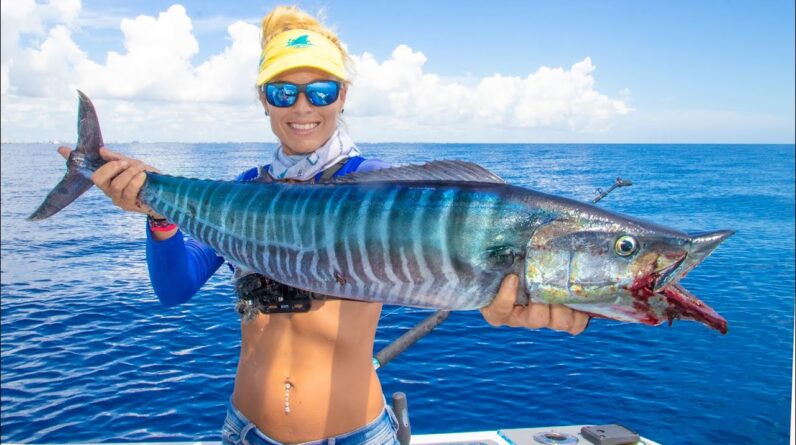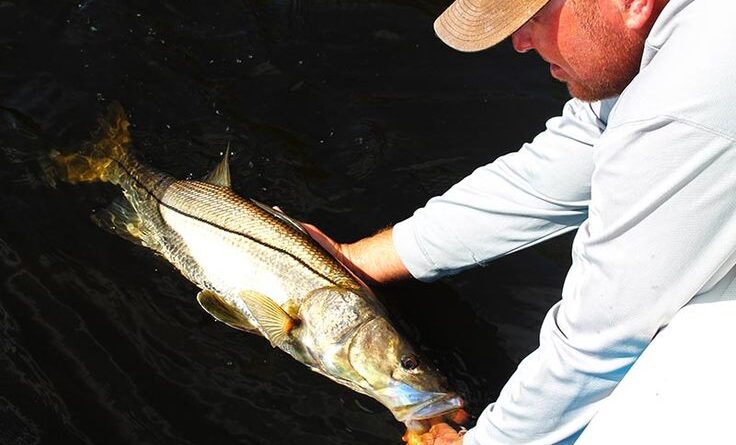Freshwater fishing is a popular outdoor activity that offers relaxation, excitement, and the opportunity to connect with nature. Anglers of all skill levels can enjoy the tranquility of freshwater lakes, rivers, and ponds while attempting to catch a variety of fish species. To maximize your success and enjoyment, it’s essential to understand different fishing techniques. In this article, we’ll explore four effective freshwater fishing techniques that every angler should know. Whether you’re a seasoned pro or just starting, these methods can help you reel in a memorable catch.
- Casting and Retrieving
Casting and retrieving is perhaps the most fundamental and widely used freshwater fishing technique. It’s a versatile method that can be employed in various settings, from serene ponds to fast-flowing rivers. This technique is particularly effective when targeting fish species such as bass, pike, and trout.
The process of casting and retrieving involves the following steps:
- Select the appropriate fishing rod and reel for the type of fish you want to catch.
- Choose the right bait or lure based on the fish’s preferences and the current conditions.
- Cast your line into the water, aiming for areas where fish are likely to be hiding, such as under rocks, near vegetation, or around structures like fallen trees.
- Allow your bait or lure to sink to the desired depth, and then begin retrieving it at a steady pace, occasionally pausing to mimic the movement of prey.
- Pay close attention to any bites or tugs on your line and be prepared to set the hook when a fish strikes.
Casting and retrieving can be done from the shoreline, a boat, or even while wading in the water. It offers the angler the opportunity to cover a wide area and adapt to changing conditions, making it an excellent choice for beginners and experienced anglers alike.
Fly fishing is a specialized technique known for its elegance and finesse. It’s particularly popular among anglers who enjoy the challenge of pursuing trout, salmon, and other freshwater species that are known for their elusive nature. Fly fishing involves the use of a unique set of equipment and skills, making it a distinct and rewarding fishing method.
- Fly Fishing
Key elements of fly fishing include:
- Fly Rods: Fly rods are designed to cast lightweight flies made of feathers, fur, and synthetic materials. These rods are typically longer and more flexible than traditional fishing rods, allowing for precise and delicate presentations.
- Fly Reels: Fly reels are designed to hold the fishing line and provide drag control. They are essential for playing and landing fish once hooked.
- Fly Lines: Unlike traditional fishing lines, fly lines are thicker and heavier. They are specially designed to enable the angler to cast the lightweight fly with precision.
- Casting Techniques: Fly casting involves a unique set of techniques, including the roll cast, overhead cast, and false cast, which allows for delicate presentations and accurate fly placement.
- Flies: Flies come in a wide variety of patterns and sizes, each imitating a specific type of insect or aquatic creature. Anglers select flies based on the fish species they are targeting and the conditions in the water.
Fly fishing is not only about catching fish but also about appreciating the art of angling. It requires patience, skill, and an understanding of aquatic ecosystems. Whether you’re fishing in a mountain stream or a quiet pond, fly fishing can provide a deeply immersive and rewarding experience.
- Bottom Fishing
Bottom fishing is a technique commonly used by freshwater anglers when targeting species like catfish, carp, and panfish. This method involves placing baited hooks on or near the bottom of the water body and waiting for fish to take the bait. Bottom fishing can be done from the shoreline, a dock, or a boat, making it accessible to anglers of all skill levels.
Here are the basic steps for successful bottom fishing:
- Select the appropriate gear, including a sturdy rod and reel, suitable fishing line, and terminal tackle such as sinkers and hooks.
- Choose the right bait for the fish species you’re targeting. Live bait like worms, minnows, or nightcrawlers is often effective, but artificial bait can also work well.
- Attach your baited hook to your fishing line and add an appropriate weight (sinker) to help it reach the bottom.
- Cast your line into the water and allow it to sink to the bottom.
- Keep your line taut and periodically check for signs of fish activity. Bottom fishing often involves longer waiting periods compared to other techniques.
- When you feel a fish biting or pulling on your line, set the hook with a swift upward motion to secure the catch.
Bottom fishing is a laid-back approach to angling, making it an excellent choice for those who prefer a more relaxed fishing experience. It allows you to enjoy the peaceful surroundings while waiting for a rewarding catch.
- Trolling
Trolling is a dynamic fishing technique commonly used in freshwater and saltwater environments. It involves trailing baited lures or live bait behind a moving boat to entice fish into biting. Trolling is highly effective for targeting species like walleye, muskie, and lake trout, which often inhabit deeper waters.
To get started with trolling, follow these steps:
- Prepare your trolling setup by attaching appropriate lures or baited hooks to a sturdy line. Use a downrigger or planer board to control the depth at which your lures will swim.
- Launch your boat and start moving at a slow, steady pace. The speed may vary depending on the target species and the lures you’re using.
- Lower your baited lines into the water, ensuring they are trailing behind the boat at various depths.
- Pay close attention to your rod tips for any signs of strikes or fish activity.
- When a fish bites, reel it in while keeping the boat moving at a consistent speed to avoid tangling the lines.
Trolling allows anglers to cover a large area of water and explore different depths to locate actively feeding fish. It requires a good understanding of the fish’s behavior and preferences, as well as the ability to adjust your trolling speed and lure selection accordingly.
Conclusion
Freshwater fishing offers a wealth of opportunities for anglers to connect with nature and experience the thrill of catching fish. Whether you prefer the versatility of casting and retrieving, the finesse of fly fishing, the tranquility of bottom fishing, or the excitement of trolling, there’s a fishing technique suited to your preferences and the target species. Remember to respect local fishing regulations, practice catch-and-release when appropriate, and always prioritize conservation and responsible angling. To learn more about these techniques and to access valuable resources for freshwater angling, visit www.cheerfulfisherman.com, a website dedicated to enhancing your fishing experience. Tight lines and happy fishing!






